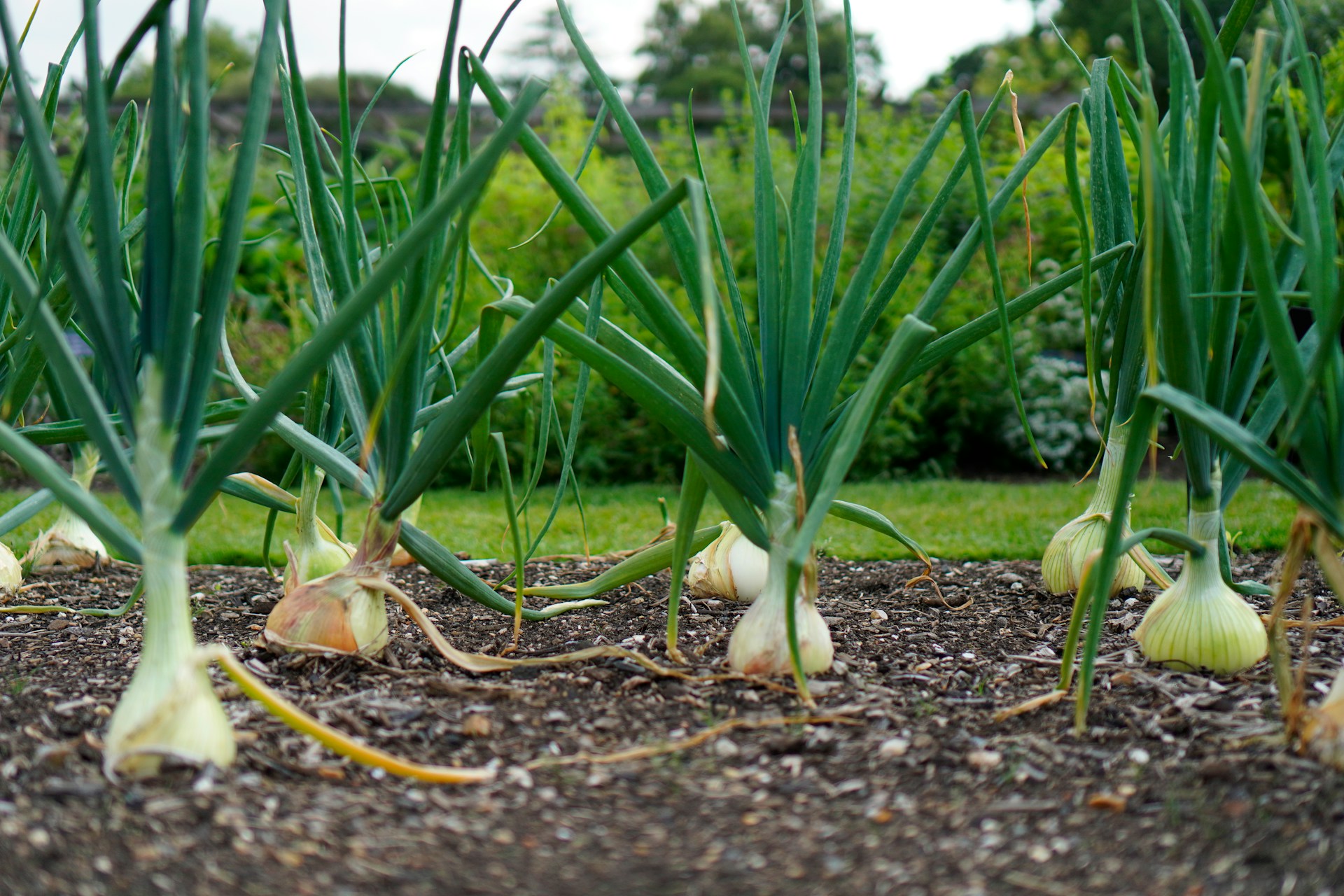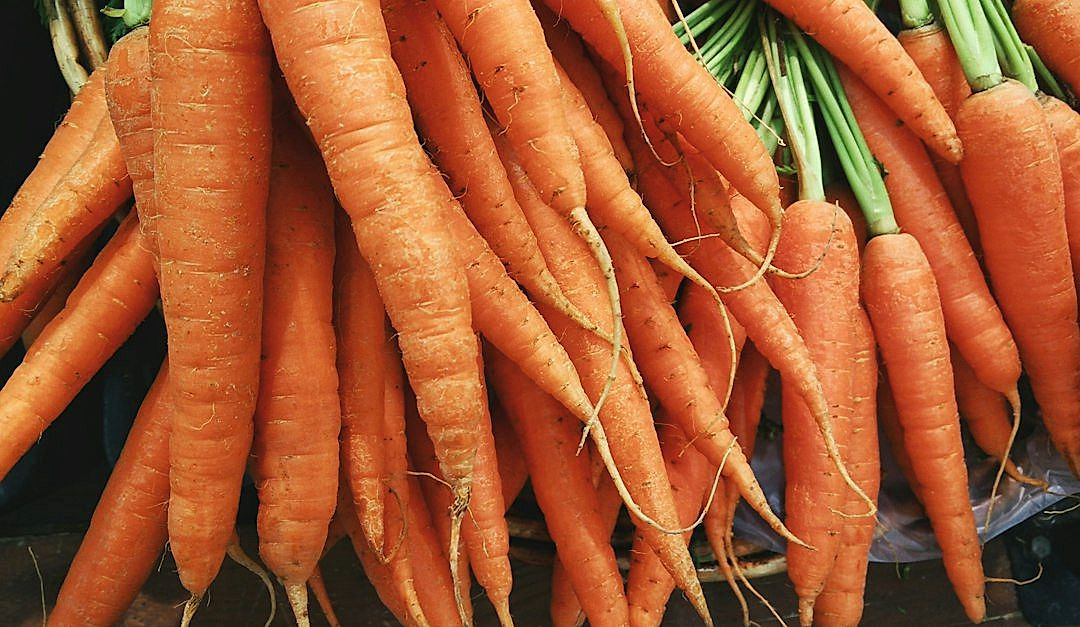In today’s fast-paced world, optimizing supply chains is crucial for businesses across industries.
Agricultural enterprises are no exception, specifically within the domain of produce distribution.
The intersection of technology and logistics offers transformative solutions capable of streamlining processes and enhancing efficiency.
Overcoming issues such as waste, spoilage, and transportation inefficiencies requires comprehensive tech-driven methods.
This article presents an analysis of technology-driven solutions, with a particular focus on their implementation in the field of produce distribution.
Through this exploration, we aim to give industry professionals insights into the potential for improved efficiency and sustainability.
Contents
- Tech Solutions For Efficient Produce Distribution
- 1. Blockchain for Transparency in Sourcing and Delivery.
- 2. IoT Devices for Real-Time Quality Monitoring
- 3. Robotics for Automated Packing and Sorting
- 4. AI for predicting demand and supply.
- 5. GPS Tracking for Efficient Delivery Routes
- 6. Cold Chain Monitoring for Temperature Control.
- 7. Cloud-based inventory management software
- The Bottom Line
Tech Solutions For Efficient Produce Distribution
1. Blockchain for Transparency in Sourcing and Delivery.
In the world of produce distribution, transparency is paramount in ensuring the efficiency and credibility of operations.
Blockchain technology, fundamentally, is a decentralized, distributed ledger that records the provenance of a digital asset.
By integrating blockchain into the produce distribution process, each part of the supply chain from the grower, through the distribution, to the consumer, can be tracked and verified.
This ensures transparency as every party involved can access and validate the same information.
“The use of blockchain technology creates a system where trust is established through collaboration and code rather than through a central authority.”
This level of transparency and trust can reduce fraud, increase efficiency, and ensure that both the supplier and the consumer are getting what they expect.
Farmers, for instance, can prove that the fruits and vegetables they are selling were grown sustainably.
Traders can show that they are dealing fairly and honestly with their suppliers.
Companies can validate that the produce they’re buying has been kept in ideal conditions throughout its journey.
And ultimately, consumers can trust that the food they are buying is fresh, safe, and fairly traded.
In cases where disputes arise, instead of going through lengthy and costly litigation processes, parties can refer to the immutable records of the blockchain.
Blockchain also allows for the authenticity of products to be preserved as the risk of counterfeits is significantly reduced.
Besides, it equips businesses with visibility into their supply chain for strategic decision-making.
This transparency in sourcing and delivery via blockchain does not only enhance the efficiency of the distribution process, but also the reputation and trustworthiness of the participating companies.
Embracing blockchain for transparency is thus a step forward towards a more efficient and sustainable produce distribution industry.
2. IoT Devices for Real-Time Quality Monitoring
Within the world of produce distribution, ensuring product quality is crucial.
As a solution to this, many industries are turning to Internet of Things (IoT) devices for real-time quality monitoring.
IoT refers to a network of physical devices that communicate and exchange data with each other through the internet.
In the context of produce distribution, these devices can be embedded in packaging or incorporated into transportation units for continuous quality checks.
For example, IoT sensors can monitor the temperature and humidity levels of a shipment in real time to ensure that perishable goods like vegetables and fruits remain fresh.
By doing so, they help to reduce produce spoilage, thereby leading to cost savings and improved overall efficiency in the distribution process.
IoT devices can seamlessly keep track of key product quality parameters, ensuring that the produce arrives at its destination in the best condition possible.
This use of technology is especially important considering the lengthy and complex journeys that many food items have to take from farm to table.
Moreover, the data captured by these IoT devices are valuable in providing insights into the conditions and handling of the produce during transport.
This aids in identifying areas for improvement in the supply chain and can help in making informed decisions to optimize future operations.
Ideally, IoT devices should be easy to install and use, and capable of providing accurate and reliable data.
With the rise in the adoption of IoT devices, it is hopeful to see a future where produce distribution is dotted with interconnected devices that automatically monitor and help maintain the highest quality of products.
This is not just beneficial for distributors and retailers, but it is also a win for consumers who can be reassured of getting products that are safe and of good quality.
So, to sum up, IoT devices for real-time quality monitoring are transforming the way industries operate by fully digitizing the quality control process.
This is instrumental in enhancing product quality, reducing waste, and improving the entire distribution system’s efficiency – a testament to the positive impact of technology on produce distribution operations.
3. Robotics for Automated Packing and Sorting
The integration of robotics technology into the supply chain operations represents a massive leap in the produce distribution sector.
Robots are not susceptible to physical fatigue, which means they can perform repetitive tasks such as packing and sorting produce with consistent efficiency.
This significantly reduces the risk of human error, hence ensuring the quality and integrity of fruits and vegetables during the distribution process.
Automation in packing includes the use of robotic arms that follow programmed instructions to place produce in specific packaging formats.
This can substantially speed up the packing process and allow for more produce to be packed in less time than using traditional, manual methods.
Moreover, the robotic arms can be fitted with sensors that can differentiate between produce, based on shape, size, and weight, ensuring the right produce goes into the right package.
The integration of machine vision systems in robots can enable them to inspect the produce for defects, ensuring only quality items are packed.
On the other hand, automated sorting involves the use of robots to organize produce into different categories or groupings, based on certain pre-determined criteria.
This could be based on the type of produce, their size, their degree of ripeness, and other factors, all of which can help optimize the distribution process.
More so, robotic sorters are capable of handling produce delicately, reducing the chances of bruising or other physical damage that can degrade the product’s quality.
Therefore, automation in packing and sorting means produce can be prepped and organized more efficiently for distribution, saving both time and resources.
It is also vital to note that, unlike human labor, robots can work all around the clock, ensuring continuous operations and enhanced productivity.
Furthermore, innovations continue to improve the capabilities of robots, with advancements such as machine learning now enabling robots to improve their efficiency over time through self-learning.
With such potential, the adoption of robotics in produce distribution stands out as a strategic factor for enhanced operational efficiency.
Ultimately, integrating automation through robotics in the packing and sorting processes within the supply chain operations is a revolutionary step towards efficient produce distribution.
4. AI for predicting demand and supply.
Artificial Intelligence (AI) has rapidly become indispensable in every sector of business, and the agriculture and food industry is no exception.
With rapid advancements in technology, AI now has the capability to accurately predict the demand and supply of produce.
With its ability to analyze and interpret comprehensive sets of data, AI has proven to be highly effective in forecasting trends based on various factors.
These factors range from changing consumer preferences and weather patterns, to political and economic situations which affect the agriculture and distribution sectors.
A system that can anticipate demand and supply trends can lead to substantial financial savings and increased efficiency in the produce distribution process.
Such a sophisticated system ensures that produce does not lie unused or go to waste because of overproduction or inadequate demand.
Moreover, AI can also predict fluctuations in supply, which helps farms and suppliers to adjust their production schedules and avoid potential losses.
By predicting demand trends, AI can help suppliers to plan their crops and manage their inventories, thereby avoiding both surpluses and deficits.
The implementation of AI-based prediction models in produce distribution can greatly enhance efficiency and profitability.
An AI system can be trained to understand complex patterns and make accurate predictions about future demand and supply by using large datasets collected over time.
This use of AI in predicting demand and supply is a key technology solution for efficient produce distribution.
Futuristic as it may sound, this application of AI is already in existence and is being used by various large-scale producers and distributors to optimize their operations.
Thus, AI has the potential to revolutionize the way the agriculture industry operates, by bringing in an unprecedented level of accuracy in predicting demand and supply.
With continuous advancements in machine learning algorithms, the accuracy and the scope of AI prediction models are only expected to increase.
While there might be concerns about the upfront investment in implementing such technology, the long-term benefits and potential savings make it a worthy choice for the producers and distributors.
5. GPS Tracking for Efficient Delivery Routes
Global Positioning System (GPS) tracking is an essential technological solution that helps in efficient product distribution by optimizing delivery routes.
This technology, when implemented correctly, can drastically reduce delivery times, cut down costs, and improve overall operational efficiency.
GPS tracking systems work by using satellites to pinpoint the precise location of the delivery vehicle, which can be monitored in real time.
This real-time data allows distribution managers to accurately predict delivery times, helping them to better plan and schedule deliveries.
Furthermore, GPS tracking helps identify the fastest and most efficient routes to the destination, considering factors like road conditions, traffic, and distance.
GPS tracking systems can lower the amount of time spent on the road, thereby decreasing fuel usage and wear and tear on vehicles.
Beyond just route optimization, GPS tracking systems can also provide vital information about driver behaviour.
They can monitor speeding, idle time, rapid acceleration, and sudden braking – all of which can impact the efficiency of delivery and the condition of the produce being transported.
Immediate alerts can be sent to managers if there’s any deviation from the assigned route or any unexpected stoppage.
This allows for immediate intervention in case of emergencies, or to address any issues that may lead to delivery delays.
GPS tracking systems also significantly reduce the chances of theft as the vehicle can be tracked in real time.
Should a vehicle get stolen, the chances of recovery are higher as the exact location of the vehicle can be traced.
The data collected by GPS tracking systems can also be used to make informed decisions regarding route planning for future deliveries.
Additionally, details like the time spent at each delivery location, the amount of fuel consumed, and the distance travelled can be recorded and analysed to seek areas for improvement.
All these factors, when combined, allow for a more reliable and efficient delivery service, enhancing the overall distribution process for fresh produce.
6. Cold Chain Monitoring for Temperature Control.
In an evolving world where technology continues to provide innovative solutions, cold chain monitoring for temperature control in produce distribution has become essential.
This entails using tech solutions to monitor and control the temperature of fresh produce during storage and transit.
It guarantees that the products stay within their optimum temperature range, preserving their quality and freshness.
Cold chain monitoring starts from the moment the product is harvested, through storage, to the moment it arrives at its final destination.
Cold chain monitoring technology plays a key role in avoiding spoilage, enhancing food safety, and reducing monetary losses.
In this process, sensors and tracking devices are used to measure and track temperature fluctuations.
For instance, if the temperature rises above the intended limit in a truck carrying fresh produce, the system would alert the relevant personnel.
This timely information enables them to rectify the problem quickly, preserve the produce, and maintain product integrity.
These systems often include digital clouds that store the history of temperature data for traceback abilities.
This level of transparency is crucial in ensuring the produce’s safety and meeting industry regulations and standards.
With advanced cold chain monitoring systems, stakeholders can also access data analytics.
This means they can view trends, make forecasts, and gain insights for future planning in produce distribution.
As a result, cold chain monitoring can significantly optimize produce distribution operations.
Some companies integrate cold chain monitoring with other technologies like blockchain and IoT to provide even greater efficiency and transparency in their supply chains.
For instance, a blockchain-based system allows all participants in the supply chain to verify and share temperature information.
This information is essential as it helps to improve efficiency and ensures that the food quality remains top-notch during the distribution process.
To sum it up, sophisticated cold chain monitoring for temperature control is a game-changer in the era of efficient produce distribution.
7. Cloud-based inventory management software
The introduction of technology has taken multiple industries by storm, especially in the agricultural sector improving the way produce distribution is managed and streamlined.
One notable development is the cloud-based inventory management software that greatly enhances the efficiency and accuracy of inventory control.
This technology solution works by enabling distributors to monitor the flow of produce right from the time of sourcing to the moment they reach the consumers.
This innovative software provides a centralized platform where produce distributors can easily monitor stock levels, orders, sales, and deliveries.
It eradicates the difficulties of manual tracking which are usually associated with errors, oversights, and resultant losses.
With cloud-based inventory management software, produce distributors can have real-time stock visibility and control, leading to optimal inventory levels and minimized waste.
Due to its cloud-based nature, the software is not limited to one device or location, allowing for remote access across multiple devices and locations.
This gives employees in different departments or locations simultaneous access to vital inventory data, promoting efficiency and collaboration.
Additionally, the software can be integrated with other systems such as accounting, sales, and procurement, providing a cohesive and seamless operational environment.
It is also designed to update automatically, which helps to keep up with any changes in regulations, market conditions, and technological advancements.
Furthermore, equipped with analytics tools, the software helps businesses to make data-driven decisions, thus improving their strategic planning capabilities.
The analytics provided by this software helps to identify trends, patterns, and insights that can lead to more accurate demand forecasting, which is crucial for maintaining efficient produce distribution.
Additionally, cloud-based inventory management software has features that automate many routine tasks and reduce the potential for human error, leading to greatly improved inventory accuracy.
Another feature of the cloud-based inventory software system is its scalability.
As a business grows and evolves, the system allows for necessary upgrades and modifications to be made, ensuring the software continues to suit the needs and demands of a growing business.
Lastly, cloud-based inventory management software improves security of information; data stored on cloud platforms is generally safe from physical damage, loss, and theft.
The Bottom Line
Adopting these radical technological advancements in supply chain management revamps the traditional methods, strengthens transparency, enhances quality control, and boosts efficiency.
Implementing blockchain optimizes sourcing and delivery, while IoT devices facilitate unparalleled real-time monitoring.
The strategic employment of robotics and AI revolutionizes packing, sorting, and accurately anticipating market demand.
Simultaneously, GPS tracking and cold chain monitoring ensure safer and more strategic logistics.
Lastly, the utilization of cloud-based inventory management boosts business operations to newer heights.
The throughline of these technologies is a commitment to smarter, faster, safer, and more reliable supply chain operations pivotal for the future.




